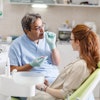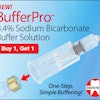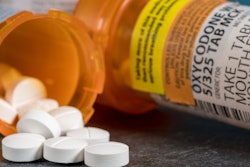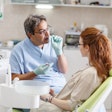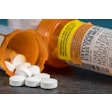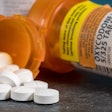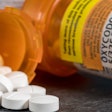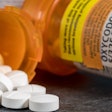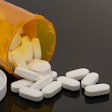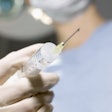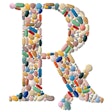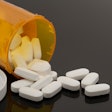About 1 in 10 pediatric dental visits in which opioids were used were linked to overdose or persistent use, with the highest chance of this occurring in preschoolers. The study was published in the Journal of the American Dental Association.
Also, a notable number of pediatric patients prescribed high-risk medications like opioids and benzodiazepines experienced outcomes like hospitalization after dental treatment, the authors wrote.
“These results highlight the need for caution in opioid prescribing and providing guideline-based nonopioid analgesia to children,” wrote the authors, led by Dr. Katie Suda, MS, director of the Center for Healthcare Evaluation, Research, and Promotion with the Veterans Affairs Pittsburgh Healthcare System (JADA, October 13, 2025).
Although opioids and benzodiazepines are often prescribed in pediatric dental care, prescribing patterns and related adverse outcomes remain poorly understood.
Therefore, to better understand the extent of such prescribing to child dental patients and the factors associated with problems like hospitalizations, MarketScan data for those younger than 18 with a dental visit between 2014 and 2019 who were given high-risk medications like opioids or benzodiazepines were analyzed, according to the study.
Also, researchers identified patient outcomes, including hospitalization, emergency department visits, or urgent care visits, within seven days after being at the dentist. Furthermore, opioid-attributable outcomes included overdose within seven days or persistent opioid use for four through 365 days after the visit.
Of the more than 37.2 million dental visits, 269,991 (0.72%) visits for 204,224 individual patients were prescribed high-risk medications.
At those visits where opioids were prescribed, about 10% were associated with overdose or persistent use, with the highest odds in patients ages 4 through 5 (odds ratio [OR], 1.48). Also, high odds were seen in girls (OR, 1.08), patients with complex chronic conditions (OR, 1.22), and in those who received care at outpatient clinics (OR, 1.43), the authors wrote.
Of those who received high-risk medications, 4.3% experienced hospitalization or visited an emergency department or urgent care within a week of the dental visit. Furthermore, higher odds were found in patients ages 9 to 11 (OR, 1.56), boys (OR, 1.05), those with complex chronic conditions (OR, 2.22), and those who were treated in hospitals or ambulatory care settings (OR, 2.20), they wrote.
Nevertheless, the study had limitations. Since this was an observational study that used claims data, causality between high-risk medication use and adverse outcomes could not be established, the authors wrote.
“These results emphasize the need for caution in opioid prescribing and support clinical practice guidelines that exclusively recommend nonopioid analgesics,” Suda and colleagues wrote.

